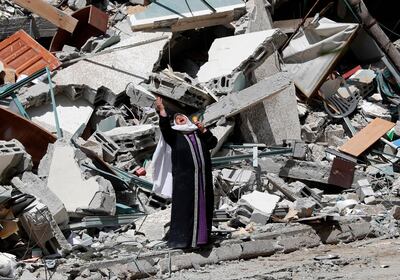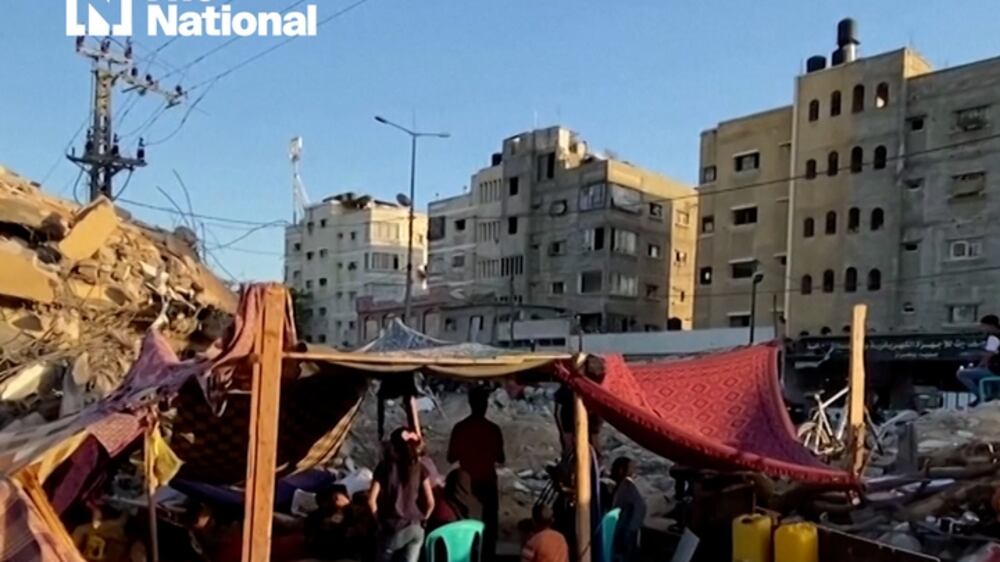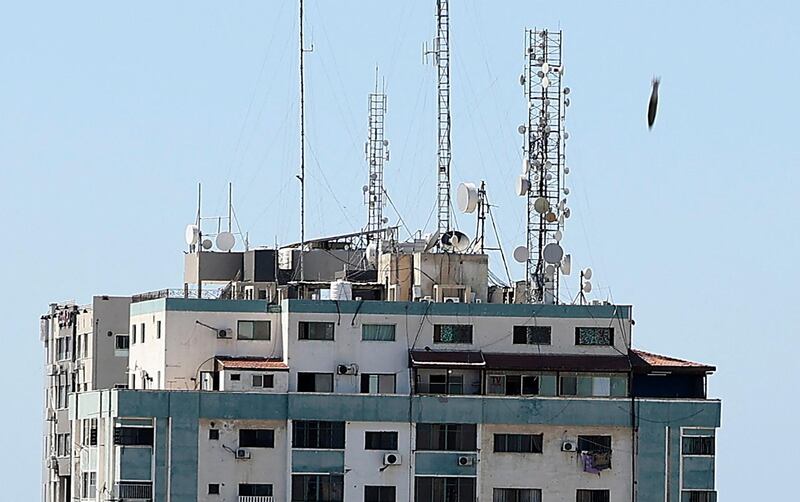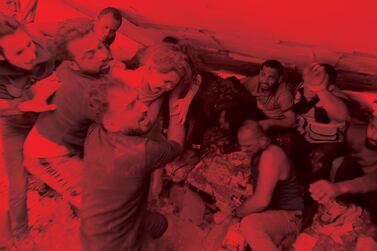The streets of Gaza City are scarred by the ruins of an unprecedented urban war in which even neighbourhoods once thought safe are now strewn with rubble.
“All the previous wars that happened in Gaza … we called it the most safe place here,” said Mohamed Jawad Mahdi, standing beside the ruins of Al Jalaa tower in the heart of the city.
Homes, offices and the newsrooms of Associated Press and Al Jazeera were all destroyed when the building was bombed this month.

Days into a ceasefire, Gazans who rarely left home during the conflict stood to look at the deformed landscape. Some took photos at the base of Al Jalaa, while horse-drawn carts loaded with breeze blocks trotted past.
“It’s like the most famous street in Gaza,” said Mr Mahdi, 32, whose family owned the tower.
“When they are targeting this area ... it’s a new level. It’s a new stage with the fight between Gaza and Israel,” he said.
The destruction of the tower and its international media offices drew global attention, as Mr Mahdi's father was filmed pleading on the phone with an Israeli officer for more time to empty the building.
Throughout the 11-day war, the Israeli military phoned residents of multi-storey buildings and ordered them to evacuate before imminent air strikes.
Israel said Al Jalaa housed military assets belonging to Hamas, the group that rules Gaza, and accused its militants of embedding themselves among civilians; charges the group denies.
The Israeli military has refused to make its evidence public, although a US official said Washington has received intelligence related to the attack.
“The first question my father asked himself was: ‘What did we do to have this punishment from the Israeli forces? Why did it happen to us?'” Mr Mahdi said.
He and dozens of relatives who lived in the tower initially crammed into one apartment, before being taken in by various family members.
Near the former tower, Nagham Al Najjar, 26, returned to work at an English language centre for the first time since the May 21 ceasefire.
"Some of the students lost some of their relatives, some of them lost homes," she said. Ms Al Najjar fled her home during the fighting.
“Most of them were shocked and were affected psychologically,” she said of the students, who were taking a refresher class rather than full lessons.
Omar Abu Al Ouf, orphan
While the Al Jalaa tower was destroyed without casualties, other attacks in the centre of Gaza city came without warning.
“I don’t know why they attacked us,” said Sobhy Abu Al Ouf, 17, in the city’s main Shifa hospital.
“Why have we been attacked in a place like this, in a neighbourhood like this?” he said.
Mr Al Ouf said he had gone to the supermarket late one night when the shelling started, killing two of his sisters, four cousins and an aunt. His mother remains in intensive care.
More than 40 people were killed in the attack on Al Wehda Street, in the centre of Gaza City.
The Israeli military said the foundations of apartment blocks collapsed when fighter jets attacked Hamas tunnels. But Omar Abu Al Ouf, a distant relative of Sobhy Abu Al Ouf, said his home took three direct hits when the street was bombed.
“My father refused to leave because he said our home is secure and our neighbourhood is secure, and we are all civilians,” he said from his hospital bed, his skin covered in cuts.
Omar's parents, sister, brother and two of his grandparents were killed in the bombing.
The 16-year-old spent hours under the rubble beside the body of his sister.
“I was sure that my family died, because I called them but no one responded,” he said.
Gazans camp in tents in rubble of their former homes

Both Israel and Hamas are being accused of war crimes over their attacks on civilians.
Israel has not said how many bombs it dropped on Gaza, although a military official said thousands of targets had been hit.
Gaza militants launched more than 4,000 rockets, according to the Israeli military, which killed 10 civilians and wounded 119 others.
The fighting was the worst since 2014 and killed 256 Gazans, including 66 children, and injured almost 2,000, including more than 600 children, according to the UN.
Hundreds of Palestinians are homeless, with some returning to the ruins to salvage belongings. On city streets covered in mounds of rubble, business owners whose shops still stand are making repairs.
Others, such as barber Hashim Al Jarousha, 33, found only a wasteland.
"I was so shocked, I had a breakdown," he said, recalling how he used to get grooms ready for their weddings at his barbershop.
“After two days I decided to be strong and collected my ideas.
“I decided to re-establish the place from the beginning, at the same place, above the rubble," he said, moments after trimming a man’s hair beside a pile of concrete.







